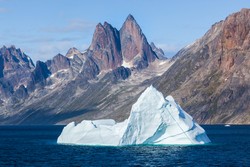Ice records of Greenland's temperature
The temperature of Greenland is a crucial variable for climate change calculations. Thus, predicting future change requires knowledge of Greenland's historical temperature variations. The EU-funded GREENTEMP (Investigation of Greenland temperature variability over the 6 000 years using trapped air in ice cores) project developed a new method to determine such variation. The study measured argon and nitrogen isotopes from ice-core air bubble samples representing the last 4 100 years, in combination with a heat diffusion model. Researchers set up a gas extraction line, and established a system able to precisely measure argon and nitrogen isotopes. Data from samples representing 4 100 to 2 100 years ago was used to reconstruct temperature variation. The team identified a significant inverse correlation, whereby strong solar activity causes cooling in Greenland. The late 20th century solar maximum should have caused such a cooling, opposed to the general warming trend for the northern hemisphere. Workers also determined that changes in the rate of surface ice accumulation affected fractionalisation of argon and nitrogen at the bubble close-off depth. The team modelled such fractionalisation as a consequence of overloading pressure. Results yielded a low-resolution record of Greenland's temperature variation over the study period. The information will be used to help predict Greenland's changing conditions in the future. Such work will help improve the general accuracy of climate change predictions.
Keywords
Greenland, ice cores, cooling, climate change, temperature variations, GREENTEMP







